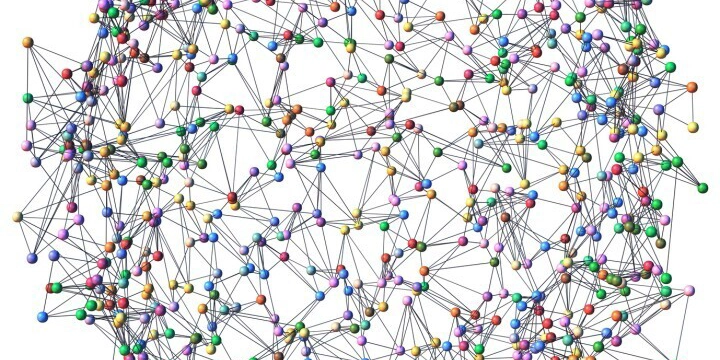Mastering Asynchronous Communication: A Game Changer for Remote Teams
In the evolving landscape of remote work, asynchronous communication has emerged as a vital strategy for distributed teams. Companies like Basecamp, Doist, and GitHub have successfully adopted this model, allowing team members to collaborate effectively across different time zones without the constraints of real-time interaction. Key Takeaways Asynchronous communication allows team members to respond at their convenience, enhancing productivity. Tools like Twist and Slack facilitate organized communication without the need for immediate responses. Balancing synchronous and asynchronous methods can optimize team collaboration. Understanding Asynchronous Communication Asynchronous communication refers to the exchange of information where responses are not immediate. Unlike synchronous communication, where team members interact in real-time, asynchronous methods allow individuals to engage at their own pace. This is particularly beneficial for remote teams spread across various time zones. Benefits of Asynchronous Communication Flexibility: Team members can respond when it suits them, reducing pressure and allowing for deeper focus on tasks. Reduced Distractions: Without the need for constant real-time interactions, employees can dedicate uninterrupted time to their work. Enhanced Documentation: Asynchronous tools often create a searchable archive of communications, making it easier to reference past discussions. Tools for Effective Asynchronous Communication To implement asynchronous communication effectively, teams can leverage various tools designed to facilitate this style of interaction: Twist: Focuses on organized communication, allowing team members to engage without the pressure of immediate responses. Slack: Offers channels and threads for discussions, along with integrations that enhance productivity. Email: A traditional yet effective method for detailed communication that can be accessed at any time. Challenges of Asynchronous Communication While asynchronous communication has numerous advantages, it is not without its challenges: Delayed Responses: Critical issues may require immediate attention, which can be hindered by the asynchronous model. Miscommunication: Without real-time feedback, messages may be misinterpreted, leading to confusion. Finding the Right Balance For many teams, a hybrid approach that incorporates both synchronous and asynchronous communication can be the most effective. Here are some strategies to consider: Establish Clear Guidelines: Define when to use synchronous versus asynchronous communication to avoid confusion. Utilize the Right Tools: Choose tools that best fit your team's workflow and communication style. Regular Check-Ins: Schedule periodic synchronous meetings to address pressing issues while maintaining the benefits of asynchronous communication. Conclusion Asynchronous communication is reshaping how remote teams collaborate, offering flexibility and reducing distractions. By understanding its benefits and challenges, teams can create a more productive work environment that leverages the strengths of both communication styles. As remote work continues to grow, mastering asynchronous communication will be essential for success in the digital workplace.

In the evolving landscape of remote work, asynchronous communication has emerged as a vital strategy for distributed teams. Companies like Basecamp, Doist, and GitHub have successfully adopted this model, allowing team members to collaborate effectively across different time zones without the constraints of real-time interaction.
Key Takeaways
- Asynchronous communication allows team members to respond at their convenience, enhancing productivity.
- Tools like Twist and Slack facilitate organized communication without the need for immediate responses.
- Balancing synchronous and asynchronous methods can optimize team collaboration.
Understanding Asynchronous Communication
Asynchronous communication refers to the exchange of information where responses are not immediate. Unlike synchronous communication, where team members interact in real-time, asynchronous methods allow individuals to engage at their own pace. This is particularly beneficial for remote teams spread across various time zones.
Benefits of Asynchronous Communication
- Flexibility: Team members can respond when it suits them, reducing pressure and allowing for deeper focus on tasks.
- Reduced Distractions: Without the need for constant real-time interactions, employees can dedicate uninterrupted time to their work.
- Enhanced Documentation: Asynchronous tools often create a searchable archive of communications, making it easier to reference past discussions.
Tools for Effective Asynchronous Communication
To implement asynchronous communication effectively, teams can leverage various tools designed to facilitate this style of interaction:
- Twist: Focuses on organized communication, allowing team members to engage without the pressure of immediate responses.
- Slack: Offers channels and threads for discussions, along with integrations that enhance productivity.
- Email: A traditional yet effective method for detailed communication that can be accessed at any time.
Challenges of Asynchronous Communication
While asynchronous communication has numerous advantages, it is not without its challenges:
- Delayed Responses: Critical issues may require immediate attention, which can be hindered by the asynchronous model.
- Miscommunication: Without real-time feedback, messages may be misinterpreted, leading to confusion.
Finding the Right Balance
For many teams, a hybrid approach that incorporates both synchronous and asynchronous communication can be the most effective. Here are some strategies to consider:
- Establish Clear Guidelines: Define when to use synchronous versus asynchronous communication to avoid confusion.
- Utilize the Right Tools: Choose tools that best fit your team's workflow and communication style.
- Regular Check-Ins: Schedule periodic synchronous meetings to address pressing issues while maintaining the benefits of asynchronous communication.
Conclusion
Asynchronous communication is reshaping how remote teams collaborate, offering flexibility and reducing distractions. By understanding its benefits and challenges, teams can create a more productive work environment that leverages the strengths of both communication styles. As remote work continues to grow, mastering asynchronous communication will be essential for success in the digital workplace.








































































































































































![[The AI Show Episode 144]: ChatGPT’s New Memory, Shopify CEO’s Leaked “AI First” Memo, Google Cloud Next Releases, o3 and o4-mini Coming Soon & Llama 4’s Rocky Launch](https://www.marketingaiinstitute.com/hubfs/ep%20144%20cover.png)



































































































































![From fast food worker to cybersecurity engineer with Tae'lur Alexis [Podcast #169]](https://cdn.hashnode.com/res/hashnode/image/upload/v1745242807605/8a6cf71c-144f-4c91-9532-62d7c92c0f65.png?#)
























![BPMN-procesmodellering [closed]](https://i.sstatic.net/l7l8q49F.png)


























































































































.webp?#)













































































































![Next Generation iPhone 17e Nears Trial Production [Rumor]](https://www.iclarified.com/images/news/97083/97083/97083-640.jpg)
![Apple Releases iOS 18.5 Beta 3 and iPadOS 18.5 Beta 3 [Download]](https://www.iclarified.com/images/news/97076/97076/97076-640.jpg)
![Apple Seeds visionOS 2.5 Beta 3 to Developers [Download]](https://www.iclarified.com/images/news/97077/97077/97077-640.jpg)
![Apple Seeds tvOS 18.5 Beta 3 to Developers [Download]](https://www.iclarified.com/images/news/97078/97078/97078-640.jpg)





























































































































